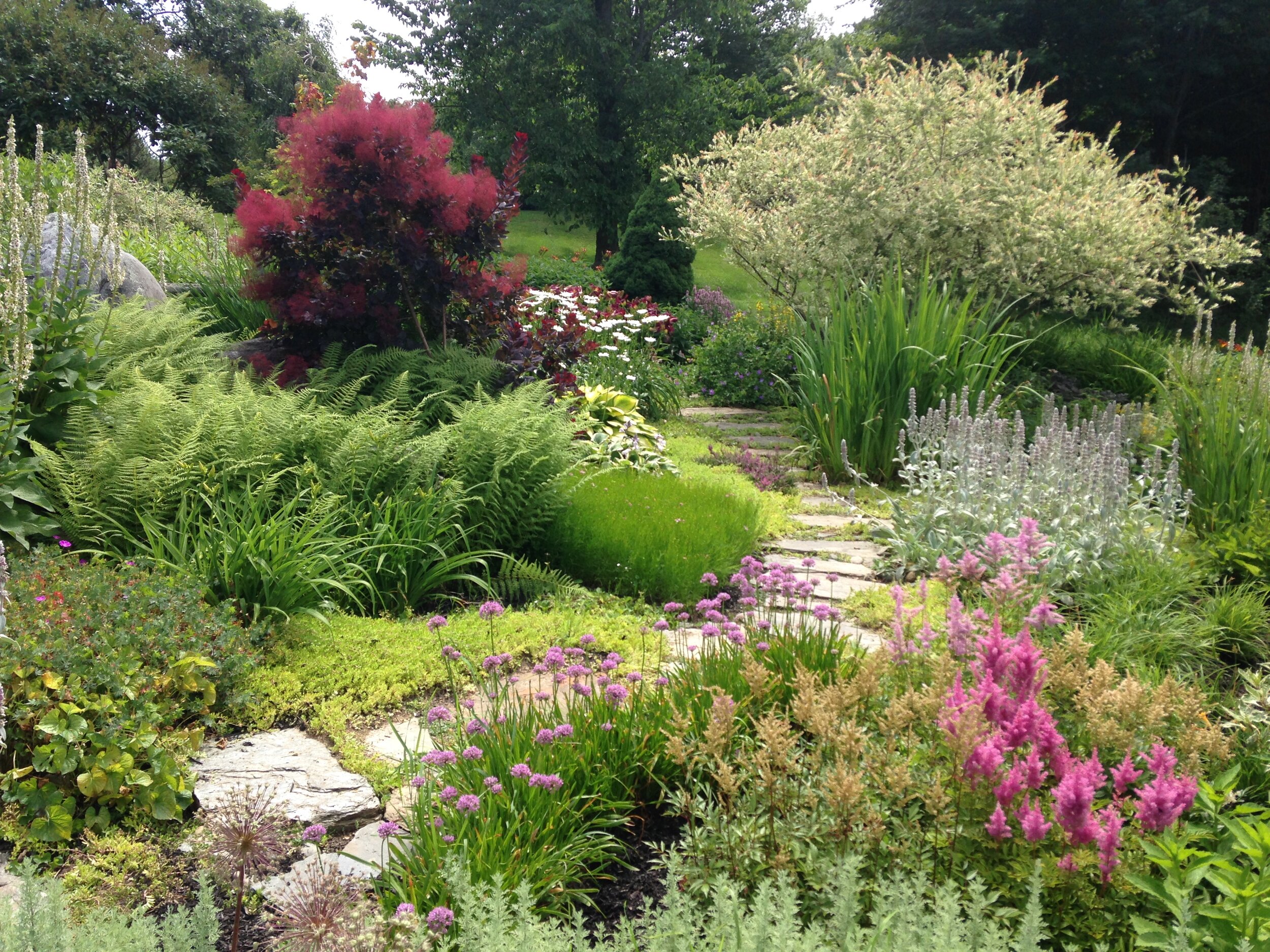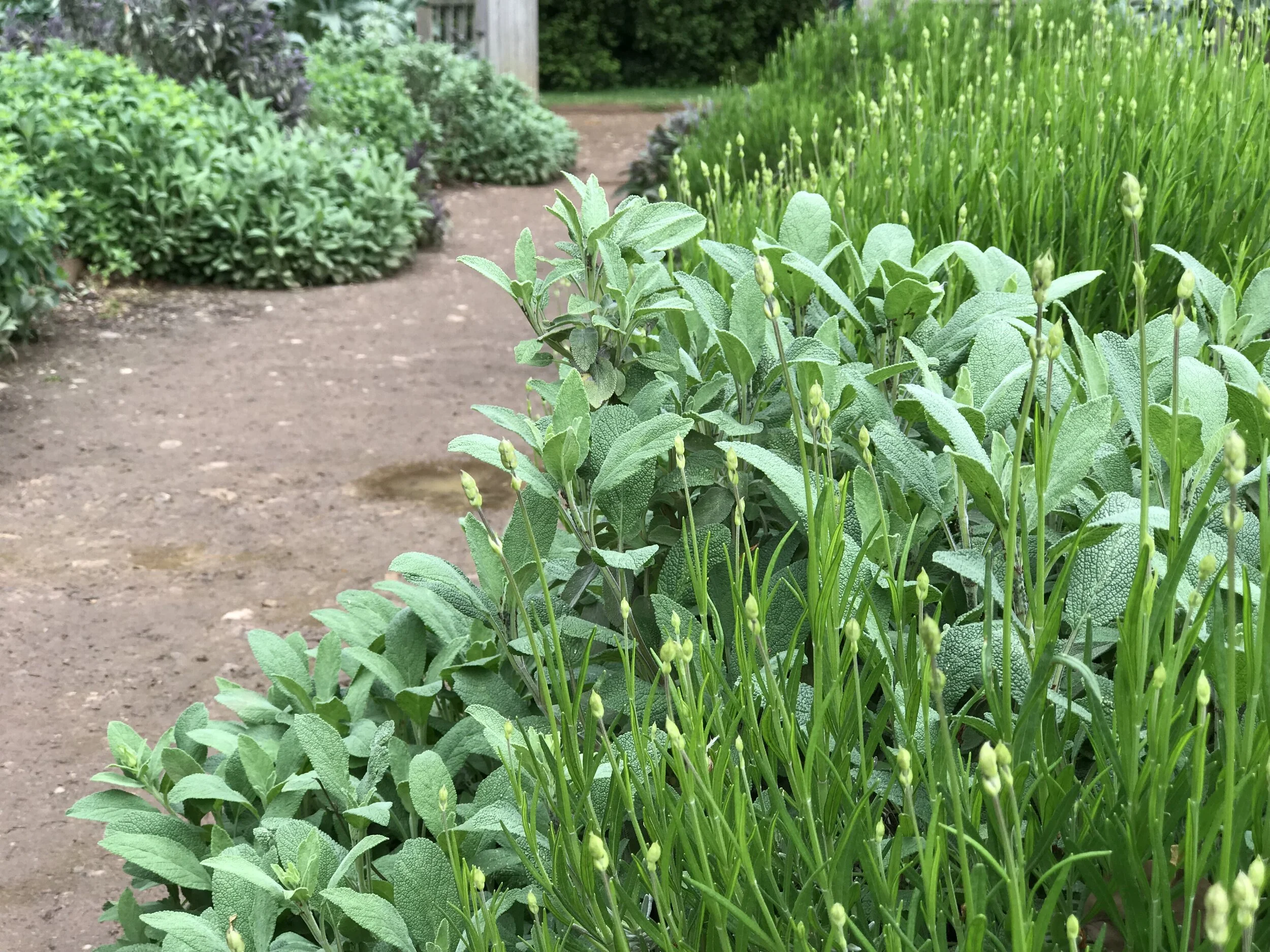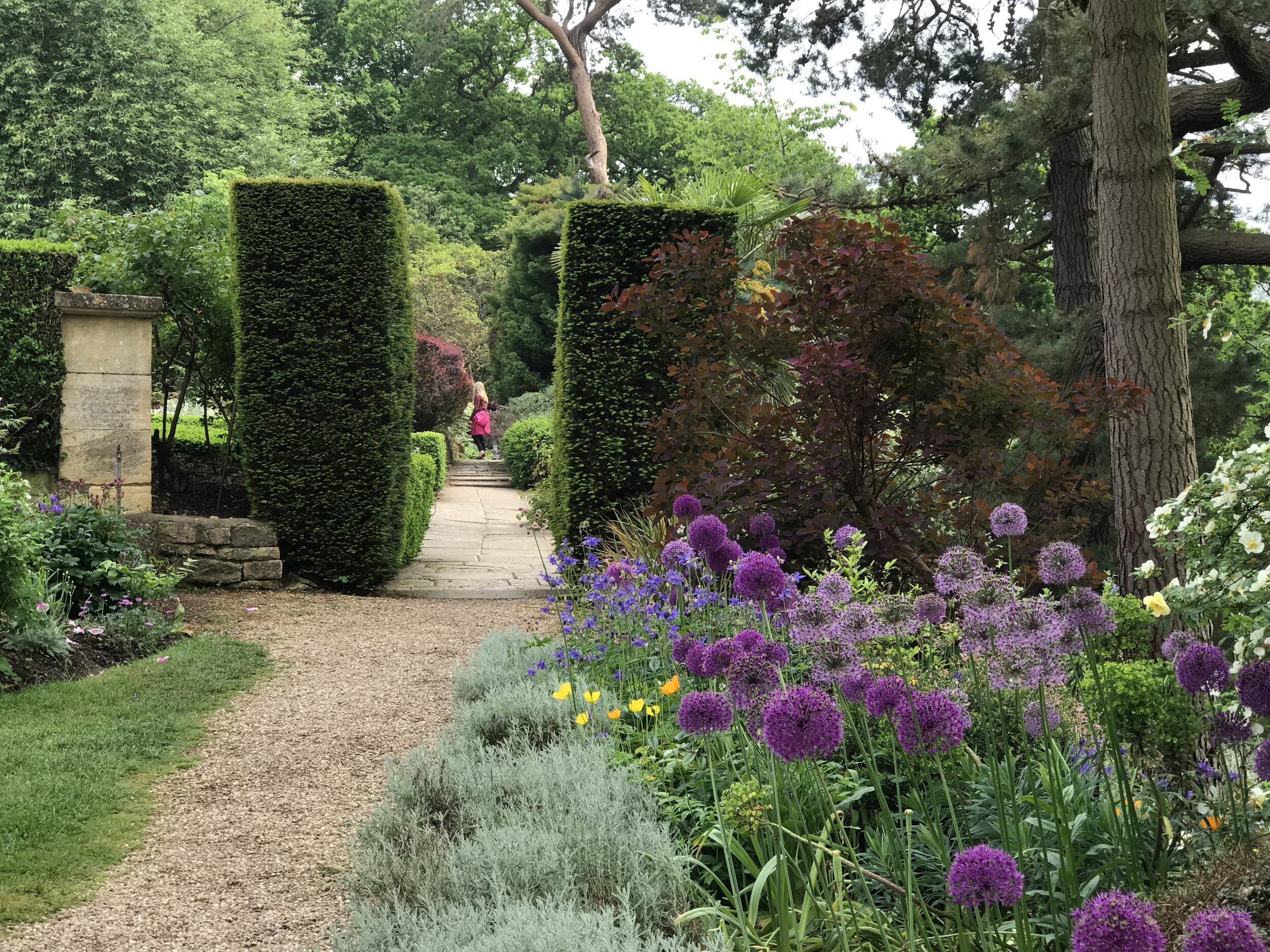Above: Moving through our gardens easily is one of the basics of good design - paths invite us to enter, cut through, or access areas that might otherwise be difficult to reach. When we use interesting plants at the edges we can create strong visual appeal and encourage people to slow down or stop. Late blooming Black-eyed Susans (Rudbeckia fulgida ‘Goldsturm’) look great near a birdbath at the Montreal Botanic Garden.
Below: In full sun gardens stepping stone paths will absorb heat and create a microclimate great for herbs and low growing succulents. I like how this gardener has mixed up the plant material with a lot of texture, height, and color. It makes the whole garden more interesting to view.
Lamb’s ear (Stachys byzantina ‘Helene von Stein’) and common chives (Allium schoenoprasum) are two must-haves if the site is dry.
Above: Dry to moist pathways will support a range of edible herbs and as you pass by it’s wonderful to brush their scented leaves and inhale the fragrant oils. With age, lavender, sage, and cheddar pinks will spill onto the hardscape and form low mounds. This dirt path is in the vegetable garden at Hidcote Manor UK where everything is grown for use in the restaurant cafe.
Straight utilitarian paths can be softened by loose informal groupings of lamb’s ear, catmint, creeping thyme, chamomile, lavender, and tall cardoon. All love a dry situation and benefit from neglect and lean or rocky soils. Photo taken at Hollister House in Washington CT, a preservation project of The Garden Conservancy which is open to the public for tours and events.
Above: Columbine (Aquelegia vulgaris) is a great choice for an informal pea gravel path.
At Kiftsgate Court Gardens in the Cotswolds, we can see a couple different surface materials within the linear framework. Here we have lavender cotton (Santolina spp.) edging the pea gravel with a mix of columbine, poppies, and purple alliums filling in the border.
Lavender is one of the best herbs for lining a path in full sun. With age and maturity the plants will spill out to visually soften the path’s edge.
Above: Boxwood parterres give structure to the formal gardens at Blithewood, the Italianate gardens on the campus of Bard College on the Hudson river. Here we see fountain grass (Pennisetum alopecuroides) with its soft seedheads arching over the boxwood, making a very tactile effect. Fountain grass is one of my favorites for its touchability and late season form.
Paths can be mown lawn edged with ornamental grasses. Good to touch as you walk by. Took this photo at Knoll Gardens in Wimborne UK, a specialty grower of grasses and fine perennials.
Above: The backyard I designed at our last home in Arlington, Virginia had a lot of textural grass along the path. We removed all the turf, installed a patio and a paver path set in large pebbles within a steel framework. This shot was taken in October I think and shows switchgrass (Panicum virgatum) on the right along with salvia and tall miscanthus on the left. A little wild but very fun to pass through.
What to do for shade? Photo above shows ferns and a bold mass planting of Japanese astilbe which happily co-mingle along the path at the Coastal Botanic Gardens in Boothbay ME.
Next spring if you’re in Manhattan, go walk the High Line and look at the plantings. Grasses soften the stonework, emerging in May along with white foamflower (Tiarella cordifolia), one of the great woodland shade groundcovers native to the Eastern U.S.












